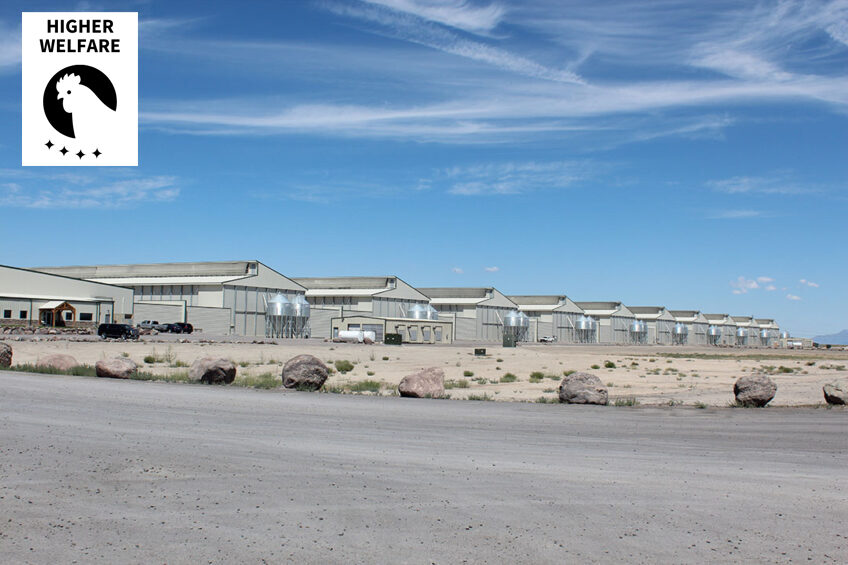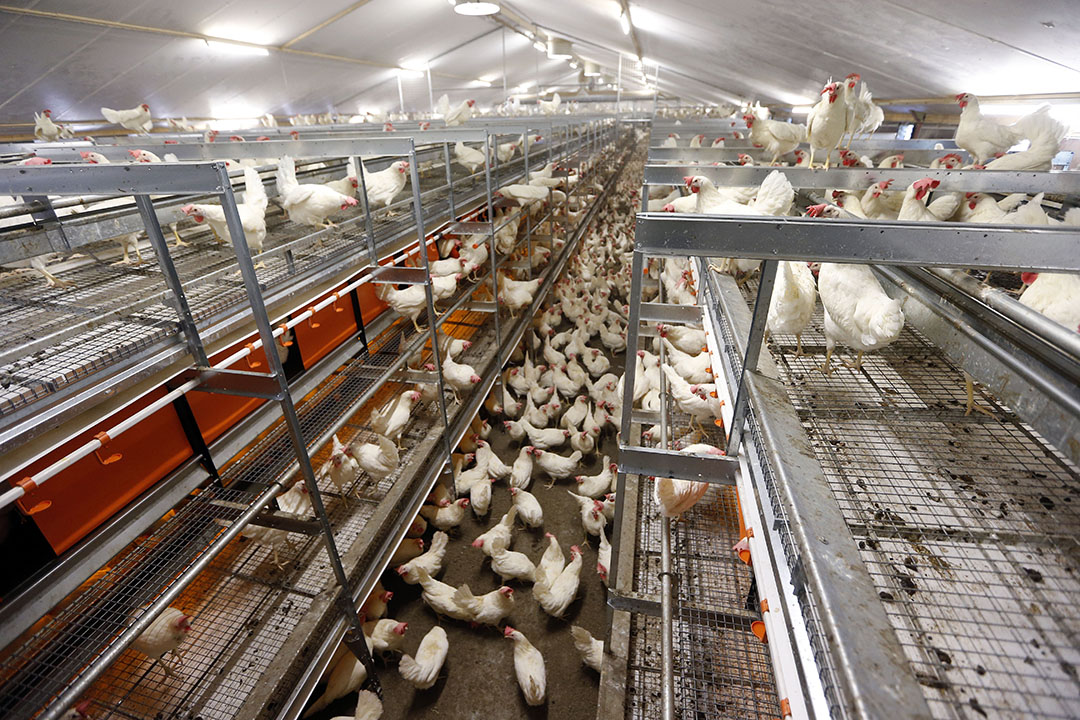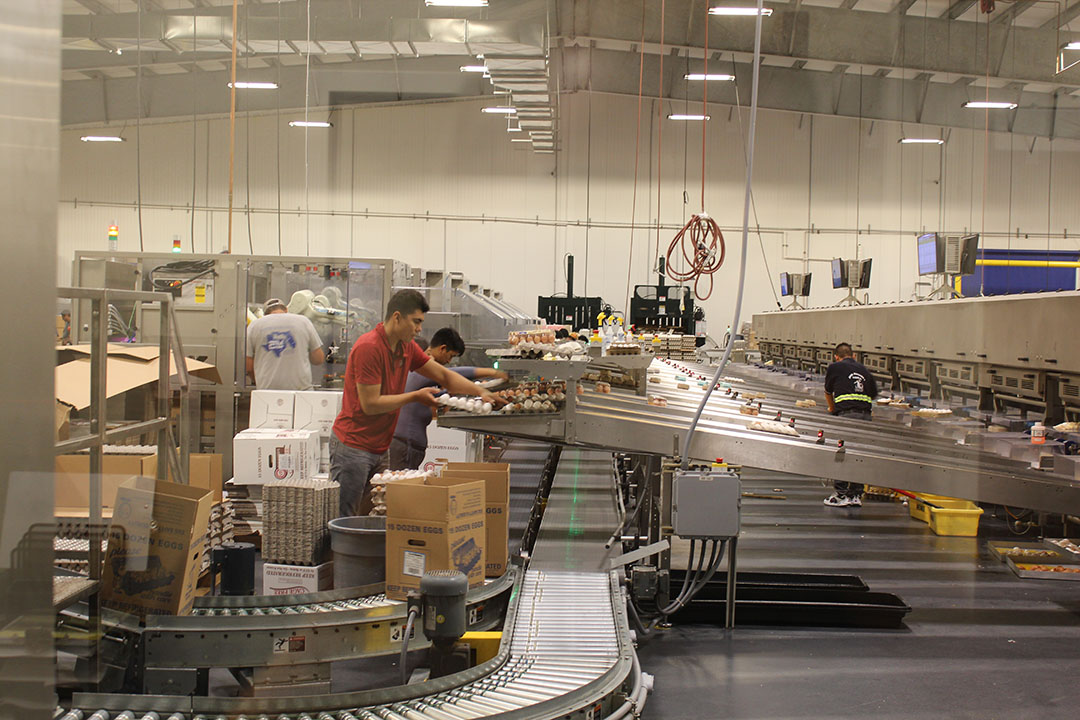A new milestone in US egg production

Delta Egg Farms converted from conventional to aviary housing in 2019 to deliver eggs to California well into the future. The state, with its more than 40 million inhabitants, is an extremely attractive market, even for Delta, located 150 km southwest of Salt Lake City, Utah.
One of the most modern laying hen farms in the US is located north of the small town of Delta, which is the county seat of the sparsely populated Millard County with a population of 3,400 people. The farm itself is located far away from the town centre in the middle of a semi-arid steppe with little vegetation which, further south, changes into intensively irrigated farmland, where mainly alfalfa for dairy farms is produced.
The water of the Sevier River, which here formed an inland delta that gave the city its name, is stored in a reservoir and distributed to the farmland. A total of around 30,000 hectares are irrigated.
Choice of location
The decision to build a large layer farm at this site was made in 1998. Access to highway US 50, which runs all the way to California, and to interstate 15, which runs north-south, and is an excellent link to the urban agglomerations in the southwest, was of great importance for the marketing of the eggs.
Around 80 million people can be reached by truck from the farm within a day. The isolated location was assessed as a major advantage with regard to the introduction of highly contagious poultry diseases. Another decisive factor was that the dry manure could be delivered to farms in the Sevier River valley, avoiding long transport routes.

The first farm was built with conventional cage batteries. It provided space for 1.1 million laying hens. The eggs were sold in 7 states in the southwest. The farm was purchased by Cal-Maine Foods from the initial investor in 2003 primarily to serve the California market.
The high level of support among the Californian population for Proposition 2 in a referendum in 2008, which included a ban on keeping hens in cages, and the amendment by Proposition 12 in 2018, which bans the sale in California of eggs and egg products which were produced in such farms, no matter in which state, forced the transformation. To be able to deliver eggs to California in the future – the state with its more than 40 million inhabitants is an extremely attractive market – the housing system of the farm had to be changed.
Re-alignment in detail
Because Californian egg producers were unable to convert existing layer farms or build new ones by the time Proposition 12 would become effective on 1 January 2022, new farms that met the requirements of the legislature were built in Arizona and Utah. Cal-Maine decided to convert the existing farm in Delta and to build another large farm on a neighbouring property. The expansion made sense because it became apparent that other states besides California would also decide to ban conventional cages. In addition, leading food and quick-serve restaurant chains declared that they would no longer list or use eggs produced in cage systems from 2025 on.
The original farm was converted from conventional battery cages to a cage-free housing system of the US manufacturer Chore-Time. The Natura Step system of the German manufacturer Big Dutchman was chosen for the new farm. The 10 barns provide space for 2.2 million laying hens on 3 floors, so that a total of 3.3 million hens are concentrated at this location.
Production and distribution
With the exception of hatching the chicks, egg production at the Delta Egg Farm is vertically integrated. White layer chicks (90%) are obtained from a HyLine hatchery in Idaho, brown layer chicks from a Hendrix hatchery in Nebraska. The day-old chicks are reared in 3 pullet houses, which are located 800 m from the hen houses. After 10 to 20 weeks, the pullets are placed in the laying houses by the facility’s own crews.

To reduce the risk of introducing any highly infectious disease, no external workers are used. The feed for the pullets and layers is transported to the farm site in the farm’s own trucks from a railway station 22 km away where the company has built a compound feed mill. The trucks are disinfected before entry. Strict hygiene regulations also apply to all employees. They are not permitted to keep any poultry privately and they have to park their cars outside the farm area and can only enter the farm buildings after they have changed their clothes and disinfected their hands. These regulations made it possible to avoid infections during the avian influenza outbreaks in both 2015 and 2022.
Between 2.8 and 2.9 million eggs are produced every day. They are transported from the individual houses via conveyor belts to the central sorting and packing station. There they are washed, sorted and packed in small packs (6 or 12 eggs) or on trays (30 eggs). The small packaging units are delivered by cardboard factories that print them according to the customer’s wishes. They then leave the farm in crates containing 360 eggs. The transport to the customers is carried out either with their own trucks or by haulage companies. Strict hygiene regulations apply to these vehicles, too. Eggs are sold in 7 states in the west; California alone takes 50%, followed by the agglomerations of Phoenix, Salt Lake City, and Las Vegas.
New ventilation system
Most layer farms in the arid regions of the US are equipped with a ventilation system which on one gable end sucks fresh air into the barn via moistened plastic grids. Huge fans on the other gable end create negative pressure which drives the air flow. This ventilation system has the disadvantage that very large volumes of air have to be moved through the long barns at a comparatively high speed in order to prevent the temperature gradient between the inlet and outlet becoming too large. This high air velocity can lead to respiratory problems among the hens, because dust is also stirred up.
A new ventilation system was installed to eliminate this problem or, at least, significantly reduce it. Fresh air is sucked in over the entire length of the barn at the ridge via a moistened plastic grid. A vertical air flow over the entire height of the house is generated by fans, which are installed at the bottom of the side walls. This system has several advantages. On the one hand, a significantly lower air velocity is required because the distance to be bridged is only 15 m and the cooler air tends to sink anyway. The vertical temperature gradient in the barns is small; horizontally, a uniform temperature can be achieved over the entire length of the building. The low air velocity also results in less dust formation. As fewer fans are required, energy consumption can be reduced.
Disposal and recycling of dry manure
While in the converted barns, the dry manure is stored in a manure bunker at the end of each barn (from where it is then transported to the farms), the decision was made to store it differently in the new hen houses. The dry manure is collected centrally in a building by conveyor belts running across the houses. This reduced the construction costs. The dry manure remains in the manure store for a maximum of 2 weeks. It dries very quickly in the arid climate, which results in a significant weight reduction for transport.

Farmers pay US$ 20 per tonne (t). Demand is very high given the rising cost of mineral fertilisers. The fertiliser value would allow transport of up to 500 km by truck, but the dry manure remains predominantly on farmland in the Sevier River valley. The manure demand from the farms would enable 8 million laying hens to be kept, so there would be no disposal problems even if the farm were to be expanded. Part of the dry manure is composted together with dead birds and eggs unsuitable for distribution. Without the addition of water, the process takes about a year in the arid climate, and the windrows are turned over 3 times. The compost is in high demand among farmers and nurseries and is sold at US$ 30/t.
Outlook
Cal-Maine Foods built one of the most modern laying hen farms in the US. It represents a new milestone in cage-free egg production in the US and provides space for 2.2 million laying hens. The construction was in response to the legal regulations in California which, from 1 January 2022, only permit the sale of eggs and egg products which have been produced in cage-free systems. Along with the installation of the Natura Step housing system from Big Dutchman, a new ventilation system was developed which not only facilitates a better barn climate but can also be operated using less energy.
Whether further barns will be built at the site will depend primarily on the development of the demand for eggs produced in cage-free housing systems. The excellent road links and the possibility of delivering the dry manure to farms in the Sevier River valley would tend to favour such a decision.












